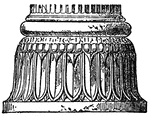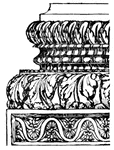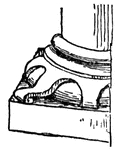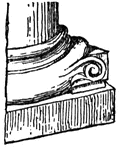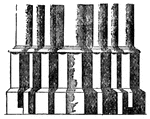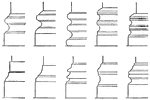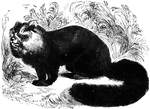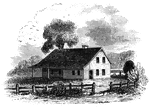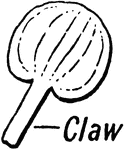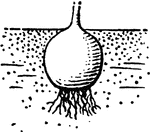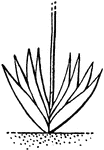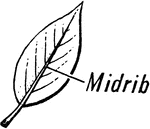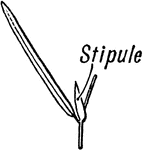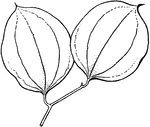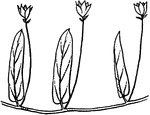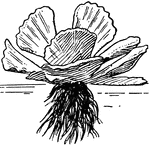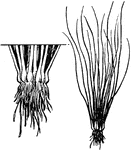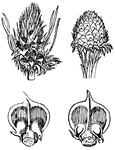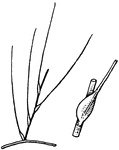
Civet
There are several species of civet that live in Africa and Asia. All civets have scent-producing glands…
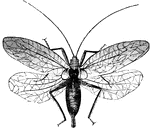
Katydid
Katydids are in the grasshopper family. The male makes noise by rubbing together two stiff, thin membranes…

Katydid
Katydids are in the grasshopper family. The male makes noise by rubbing together two stiff, thin membranes…

Parallel-veined Leaf
This type of parallel-veined leaf has veins running from the base of the leaf to the point.
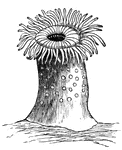
Sea-anemone
The sea-anemones are mostly found between tide-marks in rock-pools, or on ledges of stone, adhereing…
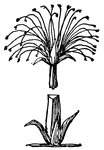
Papyrus
The papyprus is a frequent form in Egyptian ornament. Its straight, stiff triangular stem with four…
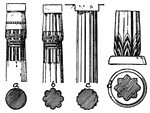
Column Types
Egyptian columns had shafts of three types: a) circular or cylindrical, b) clustered, c) polygonal or…
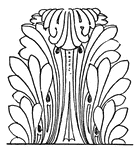
Acanthus Leaves
The Roman acanthus constitutes a type, rather than a particular form of leaf. As compared with the Greek…

Acroterium
The acroterium is the pedestal on the angle or apex of a pediment, intended as a base for sculpture.…
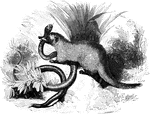
Eqyptian Ichneumon
Species of the genus Mangouste. This animal bears a close resemblance to the weasel tribe,…

New Fernandina
"Federal troops marching through Second Street, New Fernandina, Fla. Our sketch of New Fernandina in…
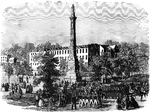
Pulaski Monument
"Review of Confederate troops on their march to Virginia, in front of the Pulaski Monument, Monument…

Harrison's Landing
"Harrison's Landing, James River, Va. The commissariat depot and base of operations of General McClellan…

Butchering Cattle
"Butchering and dressing cattle for distribution to the Federal Army. The romance and reality of life…
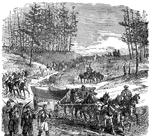
Pontoon Bridge
"The Pontoon bridge 'On The March'- the pontoon wagons on their way from Aquia Creek to the Rappahannock.…

Sherman's Campaign
"Sherman's Campaign in Georgia- the attack of the Fourteenth, Sixteenth and Twentieth Army Corps on…

War in Georgia
"The war in Georgia. Wagon train passing Resaca at night. Our correspondent wrote: 'No general probably…
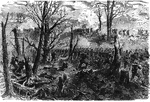
War in Tennessee
"The war in Tennessee. Capture of Mission Ridge, near Rossville, by General Thomas, November 25th, 1863.…
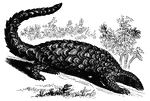
Indian Pangolin
"Its head is small, pointed, and conic; muzzle elongated and narrow; body rather stout; tail short and…
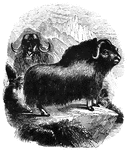
Musk Ox
"They frequent rocky regions desitute of woods, living on grass in the mild season and on lichens in…
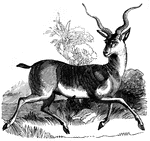
Common Antelope
"Its length is four feet; its height two and a half; the legs are long and delicate; the body round,…
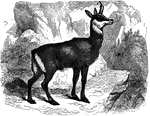
Chamois
"The horns are six or seven inches long, the body about three feet three inches, and the height at the…
Lanceolate
Shaped like a spear head, broadest near base, tapering to apex, and several times as long as broad.
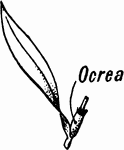
Ocrea
A tubular sheath present on the stem just above the base of the leaves of docks and smartweeds. It is…
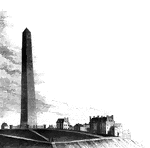
Bunker Hill Monument
"Bunker Hill Monument. This monument stands in the center of the grounds included within the breast-works…
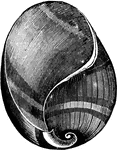
Bulla velum
"The B. velum is very elegant, and of a light-brown color; the apex and base are both white,…
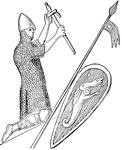
William the Conqueror
"William the Conqueror (1066-1087), as represented on his seal. Although William really ruled 'as king…

